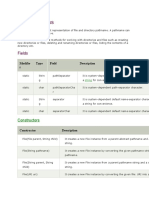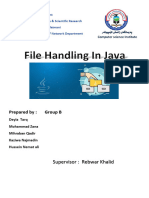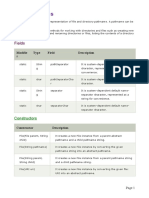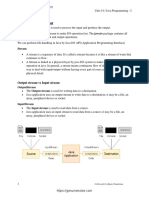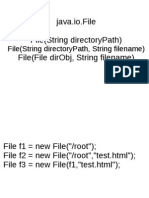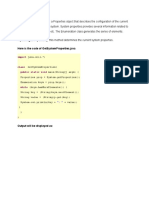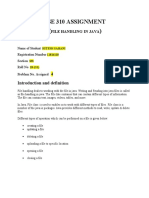0% found this document useful (0 votes)
30 views8 pagesFile Class Methods
The document provides Java code examples demonstrating the use of the File class and its methods for file and directory manipulation, including creating directories and files, checking file properties, and listing files. It also includes practice programs for counting files and directories within a specified directory. Additionally, it briefly explains the FileOutputStream and FileInputStream classes for writing and reading data from files.
Uploaded by
kushsevak9Copyright
© © All Rights Reserved
We take content rights seriously. If you suspect this is your content, claim it here.
Available Formats
Download as PDF, TXT or read online on Scribd
0% found this document useful (0 votes)
30 views8 pagesFile Class Methods
The document provides Java code examples demonstrating the use of the File class and its methods for file and directory manipulation, including creating directories and files, checking file properties, and listing files. It also includes practice programs for counting files and directories within a specified directory. Additionally, it briefly explains the FileOutputStream and FileInputStream classes for writing and reading data from files.
Uploaded by
kushsevak9Copyright
© © All Rights Reserved
We take content rights seriously. If you suspect this is your content, claim it here.
Available Formats
Download as PDF, TXT or read online on Scribd
/ 8









